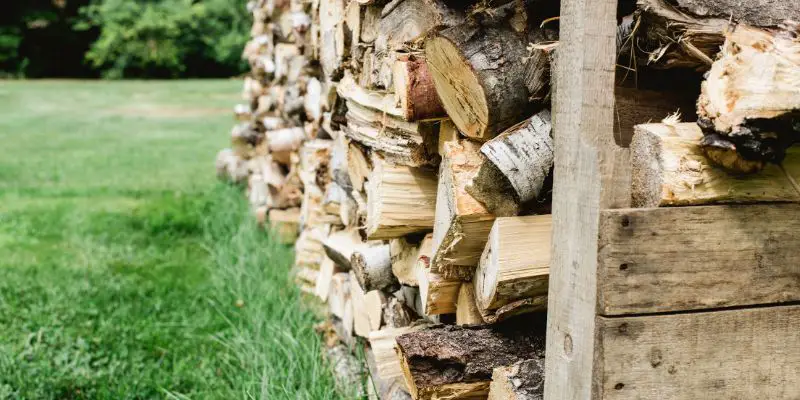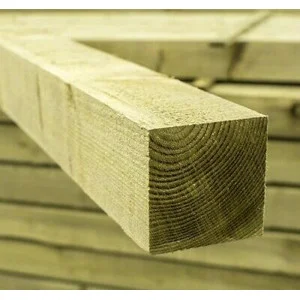Ash is a hardwood commonly used for furniture, flooring, and cabinetry due to its durability and strength. Its dense grain makes it resistant to wear and tear, giving it a reputation as a sturdy wood choice.
Additionally, its light cream to pale yellow color with occasional gray streaks adds aesthetic appeal to any project. With these characteristics, ash is classified as a hardwood.
Differentiating Ash Wood
Ashwood is a versatile type of wood that is frequently used in a variety of applications, ranging from furniture and flooring to cabinets and millwork. While ash wood is commonly grouped with hardwoods, it is important to note that it is technically classified as a deciduous tree, making it a type of hardwood. Understanding the characteristics of ash wood can help you determine if it is the right choice for your project.

Hardwood Vs. Softwood
When it comes to classifying wood, it is essential to understand the key differences between hardwood and softwood. Hardwood is derived from deciduous trees, which typically lose their leaves in the fall. These trees, like ash, have a complex structure that results in a dense and durable material. Softwood, on the other hand, comes from coniferous trees, which bear cones and usually retain their leaves throughout the year. This distinction in structure makes softwood less dense and more prone to wear and tear.
Characteristics Of Ash Wood
Ashwood possesses several distinct properties that make it a sought-after material for many woodworking projects. One of its most notable features is its straight and consistent grain, which can add a touch of elegance to any piece. Additionally, ash wood has a light to medium color range, with hues that can range from creamy white to light brown. This makes it highly versatile as it can be stained or finished to match various design styles.
Another characteristic of ash wood is its exceptional strength and hardness. It is known for its durability and resistance to wear, making it suitable for high-traffic areas such as flooring or tabletops. Despite being tough, ash wood is relatively lightweight compared to other hardwoods, making it easier to work with for both professionals and DIY enthusiasts alike.
Furthermore, ash wood boasts excellent shock resistance properties, making it ideal for applications that require impact resistance, such as tool handles or sports equipment. Its inherent flexibility also gives it superior bending properties, making it a popular choice for curved furniture pieces or structures.
Common Uses
Ash is a hardwood known for its versatility and strength. It is commonly used in furniture, flooring, tools, and sports equipment due to its durability and attractive grain. Its flexibility makes it suitable for various woodworking projects, and its shock resistance makes it ideal for making baseball bats and tool handles.
In Construction
Ashwood, whether it is classified as hardwood or softwood, has various common uses in the construction industry. Its excellent strength and durability make it a preferred choice for a wide range of construction applications.
Here are some common uses of ash wood in construction:
- Flooring: Ash wood is frequently used for flooring due to its beautiful grain patterns and resistance to wear and tear.
- Cabinetry: The versatility of ash wood makes it a popular choice for cabinetry in both residential and commercial properties.
- Doors and Windows: Ash wood‘s stability and resistance to warping make it an ideal material for doors and window frames.
- Furniture: Whether it’s for indoor or outdoor furniture, ash wood offers a combination of strength, aesthetics, and resistance to decay.
- Stairs and Railings: Ash wood’s high shock resistance and ability to hold screws and nails well make it a suitable material for stairs and railings.
In Woodworking
Ashwood is highly valued in the woodworking industry for its versatile nature and ease of working with both hand and power tools.
Here are some common uses of ash wood in woodworking:
- Cabinet Making: Ash wood’s grain patterns and ability to be stained make it an excellent choice for crafting cabinets and storage units.
- Turning: Ash wood’s fine texture and smooth surface make it a popular material for wood-turning projects such as bowls, vases, and decorative items.
- Millwork: Ash wood’s stability and consistent color allow it to be used in a variety of millwork applications, including trim, molding, and paneling.
- Carving: The medium density of ash wood makes it suitable for carving intricate designs and sculptural pieces.
- Instrument Making: Ashwood’s tonal qualities and strength make it a favored choice in the construction of musical instruments, such as guitars and drumsticks.
Ecological Impact
When it comes to the ecological impact of ash wood, it is essential to consider its sustainability and environmental considerations. Understanding the environmental impact of using ash wood can help make informed decisions that support the conservation of natural resources and ecosystems.
Sustainability
Ash trees grow relatively quickly compared to other hardwood species, contributing to their sustainability as a wood source. This fast growth rate allows for efficient replenishment of ash populations, making it a potentially sustainable choice for wood products.
Environmental Considerations
Harvesting ash wood should be carried out in a responsible manner to minimize negative impacts on the environment. Proper forest management practices, such as selective cutting and reforestation, can help maintain healthy ash populations and support the overall ecological balance.
Global Distribution
Ash is a type of hardwood commonly used in global distribution. Its durability and versatile nature make it a popular choice for furniture and flooring.
Ash trees are widely distributed throughout the world, with both native habitats and commercial cultivation contributing to their global presence.
Native Habitats
The native habitats of ash trees span across various regions and continents. In North America, you can find them in Canada, the United States, and Mexico. European ash trees are predominant in Europe, North Africa, and southwestern Asia, while Asian ash species are native to China, Japan, and Korea.
Across these regions, ash trees thrive in a diverse array of environments. They can be found in both wet and dry habitats, ranging from swamps and floodplains to uplands and mountainsides. This adaptability contributes to their extensive distribution and ability to withstand different climate conditions.
Commercial Cultivation
Ash trees are not only found in their native habitats but are also cultivated commercially for various purposes. In the forestry industry, ashwood is highly valued for its strength, durability, and aesthetic appeal, making it a sought-after material for furniture, flooring, and cabinets.
Commercial cultivation of ash trees occurs in numerous countries, including the United States, Canada, Europe, and Asia. These cultivated ash trees are often grown in plantations where they receive adequate care, including regular pruning and maintenance to optimize their wood quality.
Additionally, ash trees are sometimes cultivated for ornamental purposes in parks, gardens, and urban landscapes due to their attractive foliage and overall appearance. This further extends the global distribution of ash trees beyond their natural habitats.
Preservation And Maintenance
Ashwood is widely known for its durability and strength, making it a popular choice for a variety of woodworking projects. To prolong the lifespan and enhance the natural beauty of ash wood, proper preservation, and regular maintenance are essential. In this section, we will discuss some valuable tips and common maintenance practices for preserving and caring for ash wood.
Tips For Preservation
Preserving ash wood not only helps maintain its visual appeal but also protects it against various factors that could cause damage. Here are some useful tips to ensure the long-term preservation of ash wood:
- Apply a high-quality wood preservative or finish to protect the wood from moisture and UV rays.
- Regularly inspect the wood for signs of decay, termite infestation, or any other issues that may compromise its integrity.
- Keep ash wood away from direct sunlight and excessive humidity to prevent color fading and warping.
- Use coasters or mats to protect ash wood surfaces from hot objects and spills.
- Whenever possible, avoid placing heavy objects on ash wood furniture to prevent excessive stress on the structure.
Common Maintenance Practices
Ongoing maintenance is vital to ensure the longevity and beauty of ashwood. By adopting these common maintenance practices, you can keep your ash wood in top condition:
- Regularly dust ash wood surfaces with a soft cloth or feather duster to prevent the buildup of dirt and debris.
- Wipe spills immediately with a clean, damp cloth and dry the area thoroughly.
- For routine cleaning, use a mild soap solution or a wood-specific cleaner that won’t damage the natural properties of ash wood.
- Polish ash wood furniture occasionally with a high-quality wood polish to enhance its shine and protect the surface.
- Inspect and repair any scratches or damages on the wood surface promptly to prevent further deterioration.
By following these preservation tips and maintenance practices, you can ensure that your ashwood retains its beauty and durability for years to come. Remember to prioritize regular care and take proactive measures to protect your ashwood investment.

Credit: www.woodscanner.com
Frequently Asked Questions For Is Ash A Hardwood Or A Softwood
Is Ash Wood Harder Than Oak?
Ashwood is not harder than oak wood. Oak wood is generally considered harder and denser than ash wood.
Does Ash Wood Make Good Lumber?
Yes, ash wood makes excellent lumber due to its strength, flexibility, and attractive grain patterns. Its durability and workability make it suitable for various woodworking projects.
Is Ash A Hardwood For Burning?
Yes, ash is a hardwood suitable for burning.
Are Dead Ash Trees Worth Money?
Yes, dead ash trees can be worth money. They can be used for lumber, firewood, or turned into wood products. Additionally, the wood from dead ash trees can be sold for its value in making furniture, flooring, and other decorative items.
Conclusion
In the end, the distinction between ash as a hardwood or softwood comes down to its botanical classification. While it may exhibit some characteristics of both, the scientific consensus still categorizes it as a hardwood. Hence, it’s crucial to understand the nuances to make informed decisions for woodworking projects and material choices.


